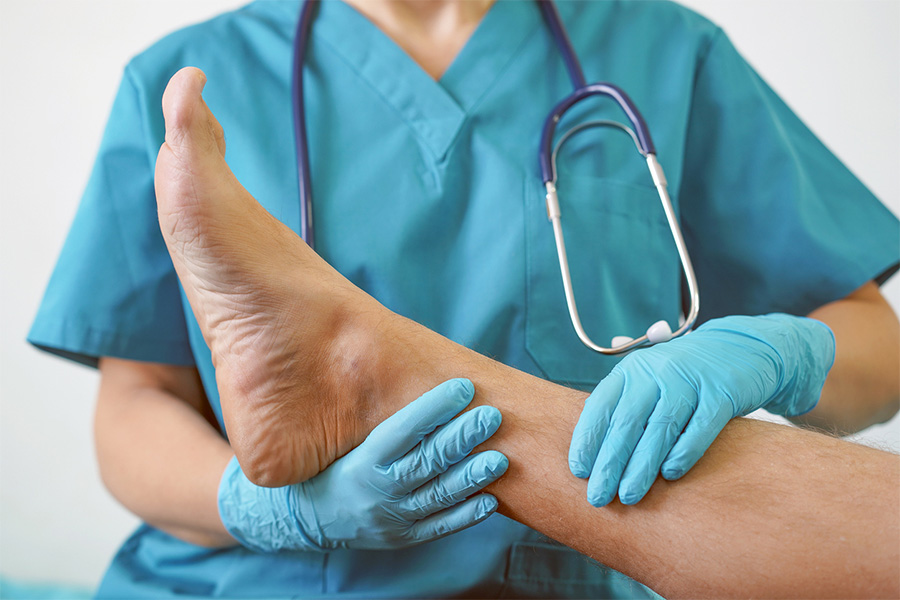Tendonitis can be a painful condition which is caused by inflammation or irritation of a tendon. It can occur anywhere in the body, but it most commonly occurs in the feet and ankles.
Overuse, repetitive movements, or overstretching can result in tendonitis. It can also be the result of an injury such as a sprained ankle. Most cases of tendonitis can be treated nonsurgically and with rest.
What Is Tendonitis?
Tendons are the strong cord-like fibers that connect your muscles to your bones. They vary in size and shape, from the small ones in your fingers to larger ones in your shoulders and legs.
Tendons are flexible and tough, and they work with the muscles to move the bones in your joints. If a tendon becomes irritated or overstretched, it can become inflamed and develop tendonitis.
Although tendonitis often results from overuse, it can also be caused by an injury – particularly while playing sports. It can also be due to structural abnormalities or diseases, such as arthritis and diabetes.
Common Types of Tendonitis
Let’s take a look at three of the most common forms of tendon inflammation:
Achilles Tendonitis
Achilles tendonitis is often caused by overuse, so it is a common injury in runners. It affects the tendon that connects the calf muscles to the heel bone.
Symptoms include heel pain and tenderness, which can become worse when walking or running. Treatment usually includes rest and pain relievers; sports and fitness activities should be avoided to prevent rupturing or tearing the tendon.
Peroneal Tendonitis
Peroneal tendonitis affects the two tendons that extend down the outer side of the lower leg bone (fibula), behind the bony lump on the outside of the ankle, and along the length of the foot. One tendon attaches to the outside of the foot at the base of the little toe, while the other runs along the sole of the foot and attaches to the inside of the arch.
Together the tendons help to stabilize the ankle. If they become inflamed from an increased load and overuse, they can rub against the bone, causing symptoms such as pain at the back of the ankle (felt most when standing or when pushing off through your foot) and ankle instability. Treatment includes immobilization with a walking boot, anti-inflammatory medications, physical therapy, and bracing.
Posterior Tibial Tendonitis
Posterior tibial tendonitis affects the tendon that attaches the back of the shinbone to the bones of the foot. When it becomes inflamed, it is unable to provide stability and support for the arch of the foot. Over time, this can result in flatfoot.
Symptoms can include pain when you start to push off through your foot and the inability to stand on tiptoes. Treatments can include a cast or walking boot, shoe inserts, arch supports, activity modification, and anti-inflammatory medication.
Symptoms of Tendonitis
Signs and symptoms of tendonitis are usually felt near a joint, at the site of the affected tendon. They can include:
- Pain that increases with movement (tends to occur more during the night)
- Tenderness
- A cracking or grating feeling as the tendon moves
- A lump felt on the tendon
- Swelling, redness, and heat at the site of inflammation
Complete Care for Your Feet and Ankles
If you are experiencing tendon or joint pain in your feet and ankles, contact the podiatrists at Cincinnati Foot & Ankle Care. We can accurately diagnose your foot condition and provide the most advanced foot and ankle care to get you back on your feet as quickly as possible.
To arrange a consultation or to find out more about the services we provide, call us at the location nearest you or use our convenient online request form. We look forward to serving you.





